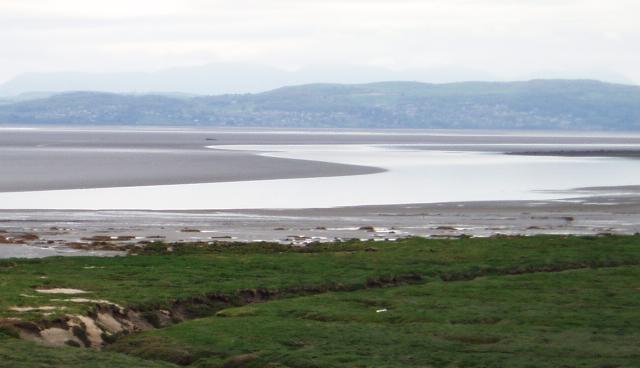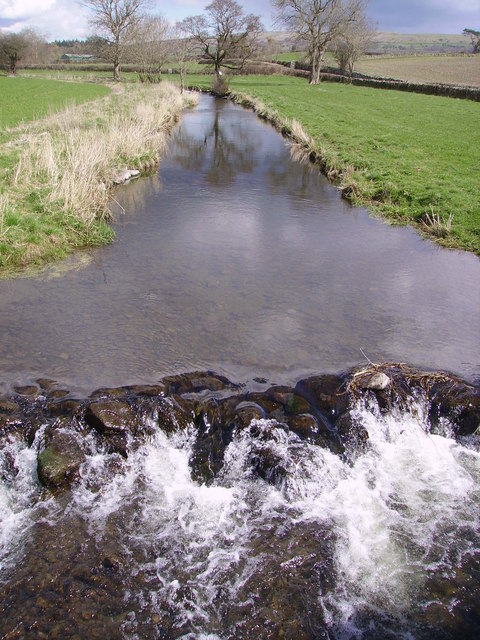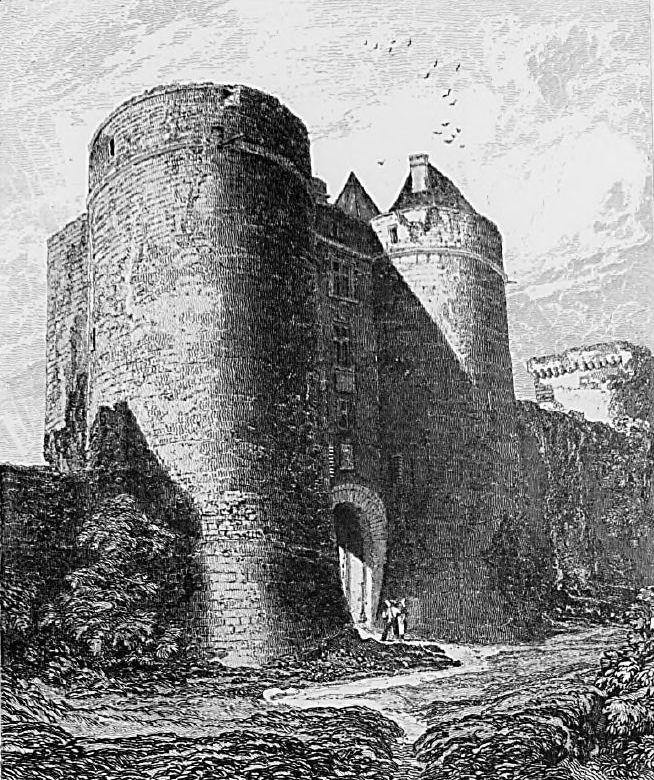 |
Cartmel
Cartmel is a village in Cumbria, England, northwest of Grange-over-Sands close to the River Eea. The village takes its name from the Cartmel Peninsula, and was historically known as Kirkby in Cartmel. The village is the location of the 12th-century Cartmel Priory, around which it initially grew. Historically in Lancashire, since 1974 it has been in the administrative county of Cumbria. Whilst its history has been in its ecclesiastical and agricultural communities, Cartmel has since the mid-twentieth century developed as a minor tourist destination, being just outside the Lake District National Park. Several attractions in the village, including Cartmel Racecourse and a Michelin-starred restaurant, cater to this tourist trade. History The name Cartmel means ‘sandbank by rocky ground’, from the Old Norse (rocky ground) and . The place-name is first attested in 677, when the Cartmel Peninsula was granted to St Cuthbert, whose influence may explain why by the Norman ... [...More Info...] [...Related Items...] OR: [Wikipedia] [Google] [Baidu] |
|
Cartmel Priory
Cartmel Priory church serves as the parish church of Cartmel, Cumbria, England (formerly in Lancashire). Priory The priory was founded in 1190 by William Marshal, 1st Earl of Pembroke, William Marshal, created 1st Earl of Pembroke, intended for a community of the Augustinians, Augustinian Canons regular and was dedicated to Mary (mother of Jesus), Saint Mary the Virgin and Saint Michael. To support the new house, William granted it the whole fief of the district of Cartmel. It was first colonised by a prior and twelve canons sent from Bradenstoke Priory in Wiltshire. 14th century Between 1327 and 1347 a chapel with four tracery, traceried windows was provided by Muchland, Lord Harrington in the south choir aisle; his tomb is in the building. The gatehouse, which apart from the church itself is the only surviving structure of the medieval priory, was built between 1330 and 1340. 15th and 16th centuries In the 15th century extensive work was undertaken, in part due to damage (be ... [...More Info...] [...Related Items...] OR: [Wikipedia] [Google] [Baidu] |
|
|
Cartmel Racecourse
Cartmel Racecourse is a small national hunt racecourse in the village of Cartmel, now in the ceremonial county of Cumbria, historically in Lancashire. Nine racedays are held each year, starting on the Whit Holiday weekend at the end of May and ending on the August Bank Holiday weekend in August Bank Holidays. The three-day May race meeting actually takes place over five days – allowing a day off for racegoers to enjoy the Lake District countryside in between each day at the races. The racegoers arrive so early in the day and leave so late that, unlike most racecourses, there is not time to clear up and turn the racecourse around for consecutive days racing. The two-day July meeting (taking place over three days, with a day off in-between) features the most valuable race at Cartmel, the Cumbria Crystal Hurdle Race, which is worth over £40,000. The August racemeeting features the Cartmel Cup (a hurdle race) and the Cavendish Cup (a steeplechase). Although the racecourse is co ... [...More Info...] [...Related Items...] OR: [Wikipedia] [Google] [Baidu] |
|
|
Cartmel Peninsula
Cartmel Peninsula is a peninsula in Cumbria in England. It juts in a southerly direction into Morecambe Bay, bordered by the estuaries of the River Leven to the west and the River Winster to the east. It is, along with the Furness Peninsula, (from which it is separated by the River Leven) one of the two areas of that formed '' Lancashire North of the Sands'', and the better known 'Furness' is often used to describe both peninsulae together. To its north, the peninsula's borders are usually given as the banks of Windermere and the border with the historic county of Westmorland between the Lake and the head of the Winster. Historically, the area was controlled by the monks of Cartmel Priory. Following its dissolution, much of the local land fell into the ownership of the Preston family at Holker Hall. Through marriage Holker became part of the estate of the Cavendish Family, and today is the home of Lord Cavendish. As well as the estate around Holker, the Cavendish family stil ... [...More Info...] [...Related Items...] OR: [Wikipedia] [Google] [Baidu] |
|
|
Cumbria
Cumbria ( ) is a ceremonial and non-metropolitan county in North West England, bordering Scotland. The county and Cumbria County Council, its local government, came into existence in 1974 after the passage of the Local Government Act 1972. Cumbria's county town is Carlisle, in the north of the county. Other major settlements include Barrow-in-Furness, Kendal, Whitehaven and Workington. The administrative county of Cumbria consists of six districts (Allerdale, Barrow-in-Furness, Carlisle, Copeland, Eden and South Lakeland) and, in 2019, had a population of 500,012. Cumbria is one of the most sparsely populated counties in England, with 73.4 people per km2 (190/sq mi). On 1 April 2023, the administrative county of Cumbria will be abolished and replaced with two new unitary authorities: Westmorland and Furness (Barrow-in-Furness, Eden, South Lakeland) and Cumberland (Allerdale, Carlisle, Copeland). Cumbria is the third largest ceremonial county in England by area. It is ... [...More Info...] [...Related Items...] OR: [Wikipedia] [Google] [Baidu] |
|
 |
Grange-over-Sands
Grange-over-Sands is a town and civil parish located on the north side of Morecambe Bay in Cumbria, England, a few miles south of the Lake District National Park. In the 2001 census the parish had a population of 4,042, increasing at the 2011 census to 4,114. Historically part of Lancashire, the town was created as an urban district in 1894. Since the 1974 local government re-organisation, it has been of the South Lakeland district of Cumbria, though it remains part of the Duchy of Lancaster. Travelling by road, Grange-over-Sands is to the south of Kendal, to the east of Ulverston, to the east of Barrow-in-Furness and to the west of Lancaster. History The town developed in the Victorian era from a small fishing village and the arrival of the railway in 1857 made it a popular seaside resort on the north side of Morecambe Bay, across the sands from Morecambe. The "over-Sands" suffix was added in the late 19th or early 20th century by the local vicar, who was f ... [...More Info...] [...Related Items...] OR: [Wikipedia] [Google] [Baidu] |
|
Lower Allithwaite
Lower Allithwaite is a civil parish in the South Lakeland district of the English county of Cumbria. It includes the villages of Allithwaite and Cartmel, the historic Cartmel Priory, Humphrey Head Humphrey Head is a limestone outcrop situated south of the village of Allithwaite in Cumbria, England. It is whale-back-shaped and accessible for walkers, giving views over Morecambe Bay to Lancaster, Morecambe, Heysham and over the Leven estuary ... and Cartmel Racecourse. In the 2001 census the parish had a population of 1,758, increasing at the 2011 census to 1,831. See also * Listed buildings in Lower Allithwaite References External links Cumbria County History Trust: Allithwaite, Lower(nb: provisional research only - see Talk page) Civil parishes in Cumbria {{Cumbria-geo-stub ... [...More Info...] [...Related Items...] OR: [Wikipedia] [Google] [Baidu] |
|
|
Furness Railway
The Furness Railway (Furness) was a railway company operating in the Furness area of Lancashire in North West England. History Formation In the early 1840s, the owners of iron ore mines in the Furness district of Lancashire became interested in a waggonway from their mines to Barrow; the project was adopted and expanded by the Duke of Buccleuch and the Earl of Burlington. Advertisements in 1843 announced a scheme, supported by their Lordships, for a Furness Railway to link Ulverston 'the capital of the district', iron ore mines (at Dalton-in-Furness) and slate mines (at Kirkby-in-Furness) with the coast at Barrow harbour and at Piel pier . Traffic on the line would be horse-drawn, but the line was to be laid out to allow easy conversion to the use of steam power.(advertisement): A survey had already been carried out by James Walker. "The primary object of this undertaking" explained a subsequent advertisement "is to improve the present very dilatory provision for the trans ... [...More Info...] [...Related Items...] OR: [Wikipedia] [Google] [Baidu] |
|
 |
River Eea
The River Eea () is a small river in the Lake District, Cumbria, England running through the Furness region, which until 1974 was part of Lancashire. It is a relatively short system that arises from numerous small becks and streams throughout the Cartmel Valley. Its course is approximately 10 km long and its mouth is on Sand Gate marshes near Flookburgh, between Barrow and Kendal. It principally flows in a south-westerly direction. Geography The river's source is a spring in the hills, meaning it flows all year round. Its upper course is called Whitestone Beck. The river's main tributaries are Muddypool and Ayside Beck, which converge above Cartmel. The river rises near High Cark in Newton Fell and the Whitestone Enclosure, and is soon fed by ''Black Beck'' (emanating from Fair Rigg south of Staveley-in-Cartmel) and ''Ayside Pool'' (rising above Ayside). From there, the River Eea runs past Green Bank and through Cartmel and Cark before flowing via Sand Gate Marsh in ... [...More Info...] [...Related Items...] OR: [Wikipedia] [Google] [Baidu] |
.jpg) |
Holker Hall
Holker Hall (pronounced Hooker by some) is a privately owned country house located about 2 km to the southwest of the village of Cartmel in the ceremonial county of Cumbria and historic county of Lancashire, England. It is "the grandest uildingof its date in Lancashire ...by the best architects then living in the county." The building dates from the 16th century, with alterations, additions, and rebuilding in the 18th and 19th centuries. The 19th century rebuilding was by George Webster in Jacobean Revival style and subsequent renovations were by E. G. Paley. Hubert Austin had a joint practice with Paley by the 1870s and they both rebuilt the west wing after it was destroyed by a major fire in 1871, only a decade after Paley's previous work on the structure. The fire also destroyed a number of notable artworks. Holker Hall is Paley and Austin's "most important country house commission." The architectural historian Nikolaus Pevsner expressed the opinio ... [...More Info...] [...Related Items...] OR: [Wikipedia] [Google] [Baidu] |
|
Lancashire
Lancashire ( , ; abbreviated Lancs) is the name of a Historic counties of England, historic county, Ceremonial County, ceremonial county, and non-metropolitan county in North West England. The boundaries of these three areas differ significantly. The non-metropolitan county of Lancashire was created by the Local Government Act 1972. It is administered by Lancashire County Council, based in Preston, Lancashire, Preston, and twelve district councils. Although Lancaster, Lancashire, Lancaster is still considered the county town, Preston is the administrative centre of the non-metropolitan county. The ceremonial county has the same boundaries except that it also includes Blackpool and Blackburn with Darwen, which are unitary authorities. The historic county of Lancashire is larger and includes the cities of Manchester and Liverpool as well as the Furness and Cartmel peninsulas, but excludes Bowland area of the West Riding of Yorkshire transferred to the non-metropolitan county ... [...More Info...] [...Related Items...] OR: [Wikipedia] [Google] [Baidu] |
|
 |
William Marshal, 1st Earl Of Pembroke
William Marshal, 1st Earl of Pembroke (1146 or 1147 – 14 May 1219), also called William the Marshal (Norman French: ', French: '), was an Anglo-Norman soldier and statesman. He served five English kings— Henry II, his sons the "Young King" Henry, Richard I, and John, and finally John's son Henry III. Knighted in 1166, he spent his younger years as a knight errant and a successful tournament competitor; Stephen Langton eulogised him as the "best knight that ever lived." In 1189, he became the ''de facto'' earl of Pembroke through his marriage to Isabel de Clare, though the title of earl was not officially granted until 1199 during the second creation of the Pembroke earldom. In 1216, he was appointed protector for the nine-year-old Henry III, and regent of the kingdom. Before him, his father's family held a hereditary title of Marshal to the king, which by his father's time had become recognised as a chief or master Marshalcy, involving management over other Marsha ... [...More Info...] [...Related Items...] OR: [Wikipedia] [Google] [Baidu] |
|
Lake District
The Lake District, also known as the Lakes or Lakeland, is a mountainous region in North West England. A popular holiday destination, it is famous for its lakes, forests, and mountains (or '' fells''), and its associations with William Wordsworth and other Lake Poets and also with Beatrix Potter and John Ruskin. The Lake District National Park was established in 1951 and covers an area of . It was designated a UNESCO World Heritage Site in 2017. The Lake District is today completely within Cumbria, a county and administrative unit created in 1974 by the Local Government Act 1972. However, it was historically divided between three English counties (Cumberland, Westmorland and Lancashire), sometimes referred to as the Lakes Counties. The three counties met at the Three Shire Stone on Wrynose Pass in the southern fells west of Ambleside. All the land in England higher than above sea level lies within the National Park, including Scafell Pike, the highest mountain in E ... [...More Info...] [...Related Items...] OR: [Wikipedia] [Google] [Baidu] |